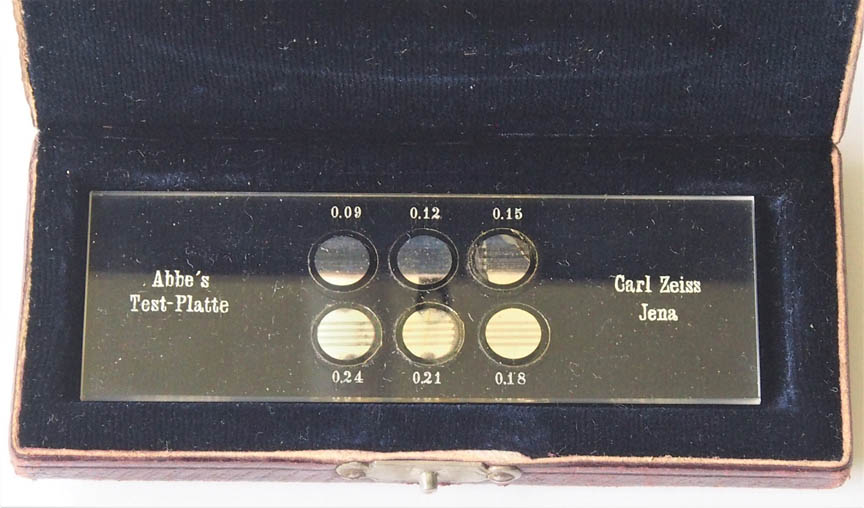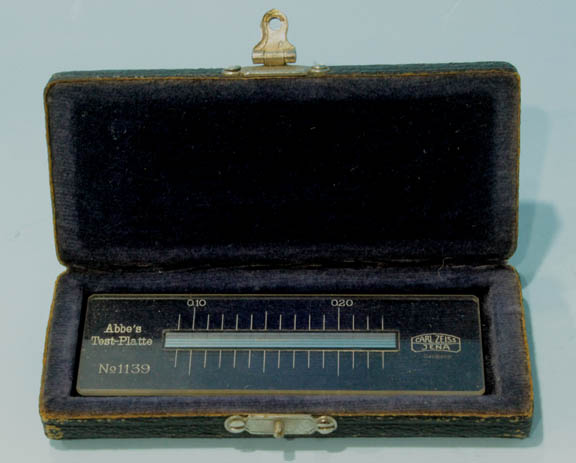ABBE TEST PLATE SLIDES

EARLIER FORM

LATER FORM
Over time, more scientific methods were developed to define the point of optimum correction for these objectives. Abbe introduced the test plate(left, collection of Jurriaan de Groot) for checking spherical correction. It consisted of a set of six small cover slips of different measured thicknesses mounted side by side on a microscope slide and having their under surfaces silvered and ruled to produce parallel bright and dark bars. The microscope was brought into focus on the bars under one cover in a narrow cone of axial light, and the illumination was then made oblique by racking the closed iris diaphragm to the margin of the condenser aperture (a feature on Zeiss microscopes). If the focal level of the image remained constant, this demonstrated that the full aperture of the objective was working uniformly; if the marginal focus differed from the axial focus, the full lens aperture was not being constructively used towards creating the image. The thicker covers introduced an error in one direction, the thinner ones in the opposite, and by adjusting the correction collar (or the tube length), an objective could be matched to any of them. The later version of the test plate used a single long coverslip, tapering in thickness from end to end, with the thickness engraved on the slides at points along the length(right, collection of Barry Sobel).

